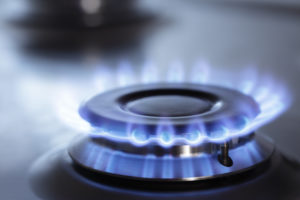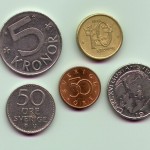 Natural gas advanced on Thursday, ahead of a government report that may show US gas stockpiles declined last week by almost twice the 5-year average drop, while weather conditions in the US continue to be freezing cold, supporting high natural gas demand, as Americans crank up the heating.
Natural gas advanced on Thursday, ahead of a government report that may show US gas stockpiles declined last week by almost twice the 5-year average drop, while weather conditions in the US continue to be freezing cold, supporting high natural gas demand, as Americans crank up the heating.
On the New York Mercantile Exchange (NYMEX), natural gas for delivery in March surged by 3.7% to trade at $5.216 per million British thermal units by 10:47 GMT. Prices hit a session high at $5.252 per mBtu, while day’s low was touched at $5.128 per mBtu. Yesterday, the contract hit $5.734 per mBtu, the strongest level since January 2010.
Prices soared 17% last month, the largest monthly advance since September 2012, after the energy source settled last year 26% higher, the best performance since 2005 and second straight annual advance.
CME Group Inc. announced on Tuesday, that effective from today, the initial margin for next-month natural gas futures, traded on NYMEX, will increase almost 10% to $ 5 500 for speculators from $5 005. This will be the highest margin requirement in more than 4 years, and will be almost double the initial margin at the beginning of this year, which was $2 530.
According to Standard & Poor’s GSCI gauge of 24 commodities, gas futures are the most volatile commodity this year as volatility more than doubled from 31.64% last year to 80.2% in 2014.
US gas inventories levels
The Energy Information Administration may report on February 6th that natural gas inventories declined by 273 billion cubic feet in the previous week, according to the median forecast of 19 analysts surveyed by Bloomberg. The five-year average decrease for the comparable period is 151 billion.
The government agency reported last Thursday that US natural gas inventories fell by 230 billion cubic feet in the seven days through January 24th, almost matching the median estimate of 15 analysts surveyed by Bloomberg for a 231-bcf withdrawal. The decline outstripped the five-year average drop of 162 bcf and last year’s 191-bcf decrease during the comparable week.
Total gas held in US underground storage hubs fell to 2.193 trillion cubic feet, 22.5% below last year’s amount of 2.830 trillion cubic feet during the comparable week. The deficit to the five-year average widened to a record 16.6%, up from 13.2% a week earlier.
According to data by the Energy Department’s statistical arm, supplies have fallen 39% in the past 10 weeks.
At the same time, the US investment bank Goldman Sachs lowered its end-of-March inventory levels’ forecast for a second time to 1.2 trillion cubic feet, down from 1.39 trillion. The bank first trimmed its forecast to 1.39 trillion from an earlier estimate of 1.61 trillion cubic feet.
A separate report by Mizuho Securities USA Inc., cited by Bloomberg, showed inventories may drop to 1.1 trillion cubic feet by March 31, which would be the lowest since 2004.
Short-term weather outlook
NatGasWeather.com reported on February 6th that the recent strong winter storm, which brought widespread rain and snow to the central and eastern US is already retreating to the sea. Central and eastern US will experience several more days of freezing temperatures, which will maintain high natural gas and heating demand.
Except for the western US, where several wet storms will develop, the rest of the US will briefly warm Saturday into Sunday. However, a new weather system is expected to come out of the northern Plains on Sunday and track across the Midwest and Northeast, leaving light to moderate snowfall, as temperatures will again drop below normal.
Another winter storm, stronger than the Sunday system, will spin up on Tuesday over the central US. The system will bring snow blankets Northeast and will be followed by reinforcing shots of cold temperatures.
According to AccuWeather.com, temperatures in Cleveland on February 10th may bottom at 9 degrees Fahrenheit, 17 beneath average, while readings in Detroit may plunge to 6 degrees Fahrenheit, below the average of 21. Temperatures in Chicago are expected to hit 1 degree Fahrenheit, 19 below normal.
When cold weather is expected, natural gas surges as increased electricity demand to power air-conditioning calls for more supply of the fuel, which is used for a quarter of U.S. electricity generation. Above-average readings in the winter season have the opposite effect. Consumption usually picks up from November through March. According to the Energy Information Administration, power generation accounts for 32% of U.S. gas demand and 49% of U.S. households use the energy source for heating.
Extended forecast
NatGasWeather.com’s extended forecast for the period ended February 19th called for a very active weather pattern over the US until the third week of February. Winter storms will track through the central and eastern US, some of which will be fairly strong. Each will bring cold temperatures, with the stronger ones carrying showers and thunderstorms over the southern US and areas of moderate to heavy snowfall over the north.
At the same time, milder conditions will advance into the Midwest and Northeast at times, but just briefly, not longer than a day or two, before cold air returns. According to the website, fairly high natural gas and heating demand for much of the second and probably part of the third week of February can be expected amid the cold weather conditions, although forecasts are still sloppy.





